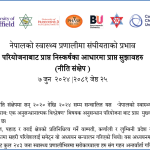
Image from fleetcarma.com
A £25million funding competition from the Industrial Strategy Challenge Fund will be available to innovative businesses with projects to develop batteries for future electric vehicles.
The Faraday battery challenge is a £246 million investment to bring forward the next generation of electric vehicles. These will be powered by high-performance EV batteries that are cost-effective, lightweight, durable and safe, and can be recycled.
Funding details
This competition is to support business-led research and development to improve batteries for automotive applications.
There are 2 opportunities to apply, depending on the stage of your project, which are:
- up to £23 million for industrial research and development
- up to £2 million for feasibility studies
In both opportunities projects should aim to:
- make it easier to scale up battery production and use
- build the UK supply chain
Please see below a summary of the funding details:
Competition opens : 17 September 2018
Deadline : 12 December 2018
Lead : UK-based business OR research and technology organisation (in collaboration with other businesses, academic organisations, charities, public sector or research and technology organisations)
Available award : between £500,000 and £15million
Project duration : between 3 and 18 months
Please see this link for more information about this funding opportunity.
 ISCF Faraday Battery Challenge: Faraday Institution – Battery Characterisation Call
ISCF Faraday Battery Challenge: Faraday Institution – Battery Characterisation Call Testing connected and autonomous vehicles: funding available
Testing connected and autonomous vehicles: funding available










 New Nepal scoping review on maternal & neonatal health
New Nepal scoping review on maternal & neonatal health Fourth INRC Symposium: From Clinical Applications to Neuro-Inspired Computation
Fourth INRC Symposium: From Clinical Applications to Neuro-Inspired Computation Writing policy briefs
Writing policy briefs Upholding Excellence: The Concordat to Support Research Integrity
Upholding Excellence: The Concordat to Support Research Integrity ECR Funding Open Call: Research Culture & Community Grant – Application Deadline Friday 12 December
ECR Funding Open Call: Research Culture & Community Grant – Application Deadline Friday 12 December MSCA Postdoctoral Fellowships 2025 Call
MSCA Postdoctoral Fellowships 2025 Call ERC Advanced Grant 2025 Webinar
ERC Advanced Grant 2025 Webinar Horizon Europe Work Programme 2025 Published
Horizon Europe Work Programme 2025 Published Horizon Europe 2025 Work Programme pre-Published
Horizon Europe 2025 Work Programme pre-Published Update on UKRO services
Update on UKRO services European research project exploring use of ‘virtual twins’ to better manage metabolic associated fatty liver disease
European research project exploring use of ‘virtual twins’ to better manage metabolic associated fatty liver disease